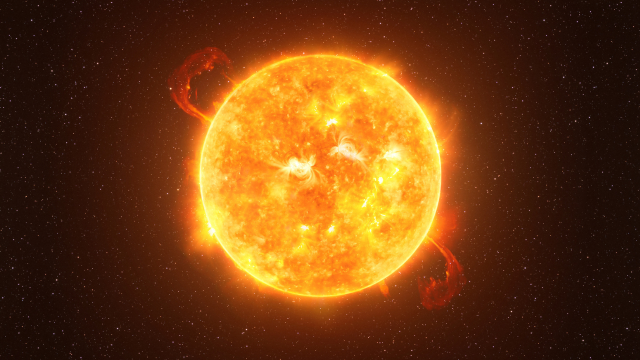For the past six years, the Parker Solar Probe has been traveling through the inner solar system to become the first spacecraft to “touch” the Sun. With each close approach to the star, the probe gathers more clues as to what triggers the Sun’s mysterious outbursts.
During a 2021 encounter with the Sun, NASA’s solar probe captured a coronal mass ejection (CME), an explosive outburst of high energy radiation, in unprecedented detail. As the probe flew through a powerful CME for the first time, it caught a glimpse of turbulent fluids indicative of a rare phenomenon that physicists have long believed occurs on the Sun but were never able to observe.
The findings, detailed in a new paper published in The Astrophysical Journal, offer a new way to better understand what triggers the explosive outbursts from our our host star. In doing so, scientists may be able to predict solar weather, which can have a detrimental effect on Earth’s power grids and navigation systems.
Turbulent eddies, or Kelvin-Helmholtz instabilities (KHI) as physicists refer to them, take place when two rapidly moving fluids interact with one another. The rare phenomenon occurs on Earth when wind speeds are different between the upper and lower parts of a cloud, and appear as spinning or moving swirls.
On the Sun, turbulent eddies could take place inside a coronal mass ejection as the plasma interacts with the solar wind in the background. “The turbulence that gives rise to KHI plays a fundamental role in regulating the dynamics of CMEs flowing through the ambient solar wind,” Evangelos Paouris, a member of the Wide-field Imager for Parker Solar Probe (WISPR) Science Team, and lead author of the new paper, said in a statement. “Hence, understanding turbulence is key in achieving a deeper understanding of CME evolution and kinematics.”
The NASA spacecraft, launched on August 12, 2018, is designed to plunge right through the Sun’s atmosphere. The solar probe uses Venus as a gravity assist to gradually shrink its orbit around the Sun, with each stellar close encounter lasting for around 12 days.
Parker Solar Probe has performed 18 solar encounters thus far, with the closest being at a distance of 4.51 million miles (7.26 million kilometers) from the Sun on December 28, 2023. The spacecraft is gearing up for its closest approach in December 2024, when it will come to within 3.83 million miles (6.16 million kilometers) of the Sun—seven times closer than any other spacecraft. It will never again fly this close to the Sun.
Although scientists have been observing the Sun for decades, there’s still so much we don’t know about our host star. The solar probe’s intimate encounters with the Sun are feeding scientists a wealth of information that could help unravel the star’s biggest mysteries.
